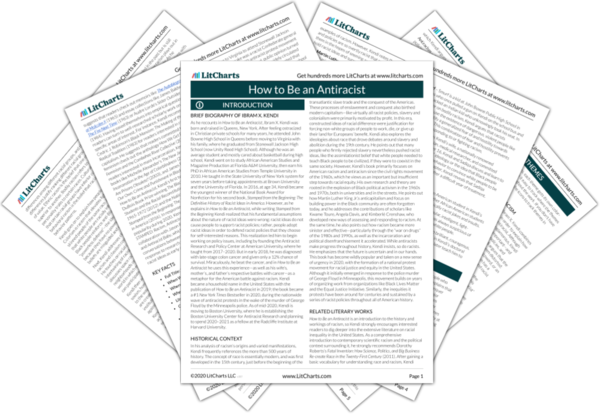Kendi compares his battle against stage-four cancer to America’s fight against racism to represent the kind of mindset that antiracist activists should adopt. When Kendi first heard another scholar compare racism to a disease at a conference, he loudly objected. Diseases are curable, he said, whereas racism is permanent, “like an organ” that the United States needs to function. But Kendi later realized that viewing racism as permanent means viewing ourselves as incapable of solving it. This makes the organ metaphor ineffective: it’s the flipside of people assuming that solving racism is as easy as attending a demonstration and then quitting activism when they realize it’s more complicated. In reality, beating racism requires the much more difficult work of fighting racist policies with antiracist ones. This is why it’s like defeating stage-four cancer: it’s a bitter fight, and the odds are overwhelmingly on racism’s side. But it’s also winnable, and it’s impossible to win unless activists maintain a hope and vision for a better future.
Cancer Quotes in How to Be an Antiracist
Over time, the source of racist ideas became obvious, but I had trouble acknowledging it. The source did not fit my conception of racism, my racial ideology, my racial identity. I became a college professor to educate away racist ideas, seeing ignorance as the source of racist ideas, seeing racist ideas as the source of racist policies, seeing mental change as the principal solution, seeing myself, an educator, as the primary solver.
Racism is one of the fastest-spreading and most fatal cancers humanity has ever known. It is hard to find a place where its cancer cells are not dividing and multiplying. There is nothing I see in our world today, in our history giving me hope that one day antiracists will win the fight, that one day the flag of antiracism will fly over a world of equity. What gives me hope is a simple truism. Once we lose hope, we are guaranteed to lose. But if we ignore the odds and fight to create an antiracist world, then we give humanity a chance to one day survive, a chance to live in communion, a chance to be forever free.












